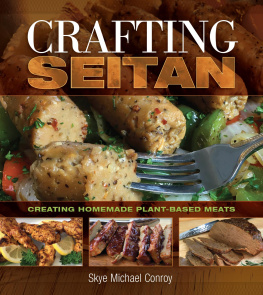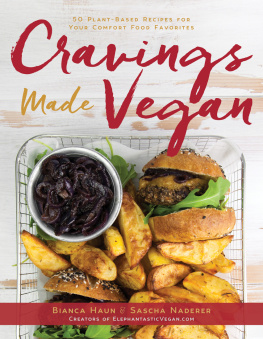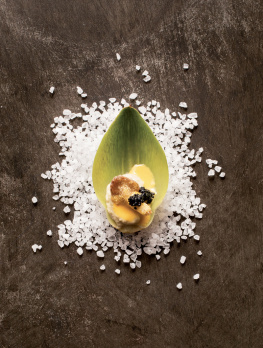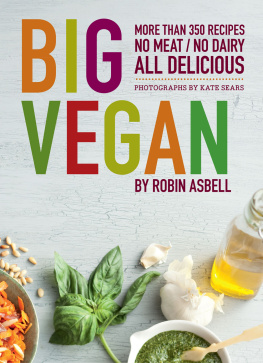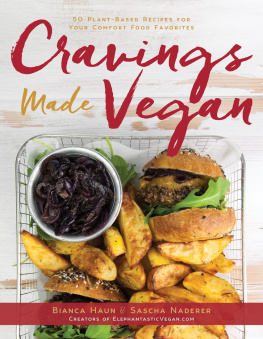

Library of Congress Cataloging-in-Publication Data
Names: Conroy, Skye Michael, author.
Title: Crafting seitan : creating homemade plant-based meats / Skye Michael Conroy.
Description: Summertown, TN : BPC, [2021] | Includes index. | Summary: Chef Skye Michael Conroy offers delicious recipes for alternatives to commercially prepared and processed plant-based meat substitutes. Many of the flavors, appearances, and textures of meat dishes can be replicated from a home kitchen. Crafting Seitan offers step-by-step guidance for preparing more than 100 recipes using wheat-based seitan, soy products, and a variety of flavorings to create burgers, meatless meatballs, roasts, and every variety of shred, batter fry, skewer, steak, cutlet, chop, and barbecue under the sun. Also included are regional American favorites, as well as Asian, Mexican, and other international dishes. Chef Conroy shares his special tips and techniques for preparing a variety of shapes and textures. A special section of the book contains his personal spice blends and flavoring mixes, sauces and glazes, and even a few nondairy staples to enhance these delicious dishes Provided by publisher.
Identifiers: LCCN 2020044634 (print) | LCCN 2020044635 (ebook) | ISBN 9781570673962 | ISBN 9781570678080 (epub)
Subjects: LCSH: Vegan cooking. | Meat substitutes. | LCGFT: Cookbooks.
Classification: LCC TX837 .C5974 2021 (print) | LCC TX837 (ebook) | DDC 641.5/6362dc23
LC record available at https://lccn.loc.gov/2020044634
LC ebook record available at https://lccn.loc.gov/2020044635

We chose to print this title on responsibly harvested paper stock certified by the Forest Stewardship Council, an independent auditor of responsible forestry practices. For more information, visit us.fsc.org.
2021 Skye Michael Conroy
All rights reserved. No portion of this book may be reproduced by any means whatsoever, except for brief quotations in reviews, without written permission from the publisher.
Food photography/cover photo: Skye Michael Conroy
Stock photography: 123 RF
Cover and interior design: John Wincek
Printed in China
BPC
PO Box 99
Summertown, TN 38483
888-260-8458
bookpubco.com
ISBN: 978-1-57067-396-2
26 25 24 23 22 21 1 2 3 4 5 6 7 8 9
Disclaimer: The information in this book is presented for educational purposes only. It isnt intended to be a substitute for the medical advice of a physician, dietitian, or other health-care professional.

Special Ingredients
BEET POWDER is used in some of the meat analogues in this cookbook to provide the red color that would typically be produced by curing meats with nitrites and nitrates. Beet powder is not readily available but can be found in a few specialty food stores or purchased online. If you dont have beet powder in the pantry, the bright-red liquid from freshly cooked or canned beets (not pickled) can be used, but youll have to experiment with producing the correct color intensity.
BROWNING LIQUID is used to create a rich brown color in soups, stews, and gravies. In meat analogues, especially those approximating beef, it is used as a color enhancer to produce a more appetizing appearance. Commercial versions, such as Gravy Master and Kitchen Bouquet, can be found in most grocery stores in the aisle where jarred gravy is located.
LIQUID SMOKE is a water-based seasoning distilled from real wood smoke; it is often used in meat analogues to provide a cold-smoked flavor. Some people are sensitive to smoke flavors or dont care for them at all, so you can omit it if you prefer. Liquid smoke can be found in most major grocery stores, usually in the aisle with condiments and marinades.
MELLOW WHITE MISO is used as a seasoning in many of the meat analogues in this cookbook. Miso adds umami (a Japanese word used to describe a pleasant savory flavor) to foods. Mellow white miso can be found in natural food stores in the refrigerated section. It has a very long shelf life (about two years), but it must be stored in the refrigerator. Yellow miso can also be used. If white or yellow miso is unavailable, you can replace it with 1 teaspoon nutritional yeast flakes plus 1 teaspoon tamari for every tablespoon of white miso called for in the meat analogue recipes.
MUSHROOM POWDER is used to add umami (a complex savory flavor) as well as color to many of the recipes in this book. Its an instant way to add an incredible depth of earthy flavor to hearty soups and stews, brown gravies, and sauces. Mushroom powder is available in many specialty and gourmet food markets and through online retailers. Alternatively, it can easily be prepared by grinding dried porcini, portobello, or shiitake mushrooms in a dry blender, spice grinder, or coffee grinder.
).
Mise en Place
Mise en place (pronounced meez-ahn-plahs ) is a French term (literally translated as put in place) that refers to the assembly and preparation of all ingredients and tools before cooking begins. It is an important culinary technique but is most often ignored. Mise en place means that all ingredients should be cleaned, peeled, chopped, or measured beforehand.
Be sure to read and reread the recipes and other information in this cookbook prior to proceeding with the recipes. Many people prepare and cook at the same time, or simply dont read instructions carefully. These are bad habits that often lead to mistakes and failures. Practice mise en place consistently, and your cooking experience will be both a pleasure and a success.
RED MISO has a deep brick-red color and a stronger flavor than white or yellow miso. It is used as a seasoning and coloring ingredient in Garden Ham (). Red miso is available in natural food stores in the refrigerated section. It has a very long shelf life (about 2 years) but must be stored in the refrigerator. If red miso is unavailable, substitutions are offered in the recipes.
TEXTURED VEGETABLE/SOY PROTEIN GRANULES is a term used to describe a commercially produced soy-based meat analogue that is dried and packaged. Often abbreviated as TVP and TSP, these products may be used interchangeably. Look for them in natural food stores, some larger supermarkets, and online.
Introduction to Meat Analogues
M eat analogues, or imitations, are generally understood within the vegan context to mean 100 percent plant-based foods that mimic or approximate certain aesthetic qualities (such as the texture, flavor, and appearance) of specific types of meat. This differs from meat substitutes or alternatives. For example, a grilled piece of tofu can serve as a substitute or alternative to meat, but when its used as an ingredient and transformed in some way to replicate the texture of chicken or pork, it becomes a meat analogue.
Many modern commercial meat analogues are made from textured wheat protein (derived from gluten) and isolated soy protein, and these products closely approximate the texture of real meat. Plant proteins, in general, can be textured to mimic the properties of real meat (chicken, beef, or pork) using different factory processes, such as spinning, jet cooking, steam treatment, and extrusion cooking. Among these processes, extrusion has been the preferred technology.
Next page
